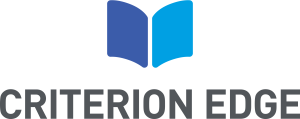The intersection of technology and healthcare has ushered in a new era of innovation, particularly with the integration of medical device software (MDSW) and hardware. In this dynamic landscape, the European Commission’s Medical Device Coordination Group (MDCG) has emerged as a guiding force, recently releasing a comprehensive document that sheds light on the intricate regulatory requirements and responsibilities associated with this convergence. Titled “Guidance on MDSW Intended to Work in Combination with Hardware or Hardware Components” (MDCG 2023-4), the guidance, published in October 2023, serves as a crucial resource for manufacturers navigating the complexities of EU regulations.
Understanding the Landscape
The guidance recognizes the pivotal role that MDSW plays in processing data from hardware or hardware components to generate diagnostic or therapeutic medical information. While it doesn’t delve into clinical evaluation or cybersecurity, it meticulously addresses scenarios where hardware, coupled with MDSW, might be categorized as medical devices or accessories to medical devices. This nuanced approach is essential, given the diverse range of technologies in use today, from wearables and smartphones to sophisticated medical sensors.
Categorizing Hardware and MDSW Applications
To provide clarity, the guidance categorizes hardware and MDSW applications into two distinct types. The first category encompasses external hardware components, such as sensors embedded in dermal patches, which provide vital input data to MDSW applications. The second category involves hardware components that are seamlessly incorporated into everyday products, such as smartphones and fitness trackers, utilizing MDSW applications for various healthcare-related functions.
EU Medical Device Regulation (MDR) Framework
At the core of the guidance lies adherence to the EU Medical Device Regulation (MDR), where the intended purpose of a medical device determines its classification as a stand-alone device, a combination with another medical device, or an accessory to a medical device. This regulatory framework serves as the backbone for manufacturers striving to bring innovative products to market while ensuring compliance with stringent standards.
Scenarios and Compliance
The guidance expounds on specific scenarios where manufacturers must assert the medical purpose of their devices to align with MDR. In one scenario, MDSW can qualify as a medical device accessory, emphasizing the interconnected nature of these technologies. In another, hardware can be deemed a medical device if it forms an integral part of a medical system or operates in conjunction with another medical device. These scenarios highlight the flexibility of the regulatory framework, accommodating a spectrum of innovative solutions.
Demonstrating Compliance: A Multifaceted Approach
In instances where hardware or hardware components are categorized as medical devices or accessories, MDSW manufacturers assume a crucial role in demonstrating compliance with general safety and performance requirements (GSPRs) outlined in MDR. This involves a comprehensive process of verification, validation, and the demonstration of safety, reproducibility, compatibility, and interoperability with the associated medical device or accessory.
Risk Management and Post-Market Surveillance
Beyond compliance, the guidance underscores the paramount importance of risk management and post-market surveillance. The communication mechanisms must be robust enough to promptly notify relevant stakeholders of safety signals, ensuring a swift response to any potential issues. This proactive approach is critical in maintaining the integrity of the healthcare ecosystem and fostering trust among end-users.
Manufacturer Responsibilities
The guidance delineates the responsibilities of both MDSW and hardware manufacturers. In situations where MDSW manufacturers cannot rely on hardware compliance with MDR, they are obligated to assume responsibility for the safety, performance, and reproducibility of the hardware used in conjunction with their software. This highlights the collaborative nature of the regulatory landscape, where manufacturers must work in tandem to ensure the overall safety and efficacy of integrated solutions.
Transparency Through Documentation
To ensure transparency and traceability, the guidance mandates that MDSW’s technical documentation explicitly identifies and describes all products, such as hardware or hardware components, intended for use in combination. This meticulous documentation serves as a foundational element in risk management, providing a comprehensive understanding of the entire ecosystem.
Conclusion: A Roadmap for Success
In conclusion, MDCG’s guidance provides a comprehensive roadmap for manufacturers navigating the integration of medical device software and hardware. As technology continues to advance, and innovative solutions become more intricate, this guidance serves as a beacon, ensuring that healthcare technologies meet the highest standards of safety, performance, and compliance. By embracing the principles outlined in the guidance, manufacturers can confidently usher in a new era of healthcare innovation that prioritizes patient safety and the delivery of high-quality healthcare services.
Our specialized services, including Regulatory Writing, Internal Support Writing, and expertise in Medical Device and Pharma/Biologics Writing, ensure that our clients meet the highest standards of safety and compliance. Furthermore, our In Vitro Diagnostics Support includes gap analyses for IVDR readiness, providing clear plans and templates for IVDR-compliant technical documents.
At Criterion Edge, we are committed to excellence in supporting our clients through every phase of product development. To learn more about how our services can benefit your specific needs, visit our website at https://criterionedge.com/. Partner with us to navigate the complexities of medical device software and hardware integration successfully.

